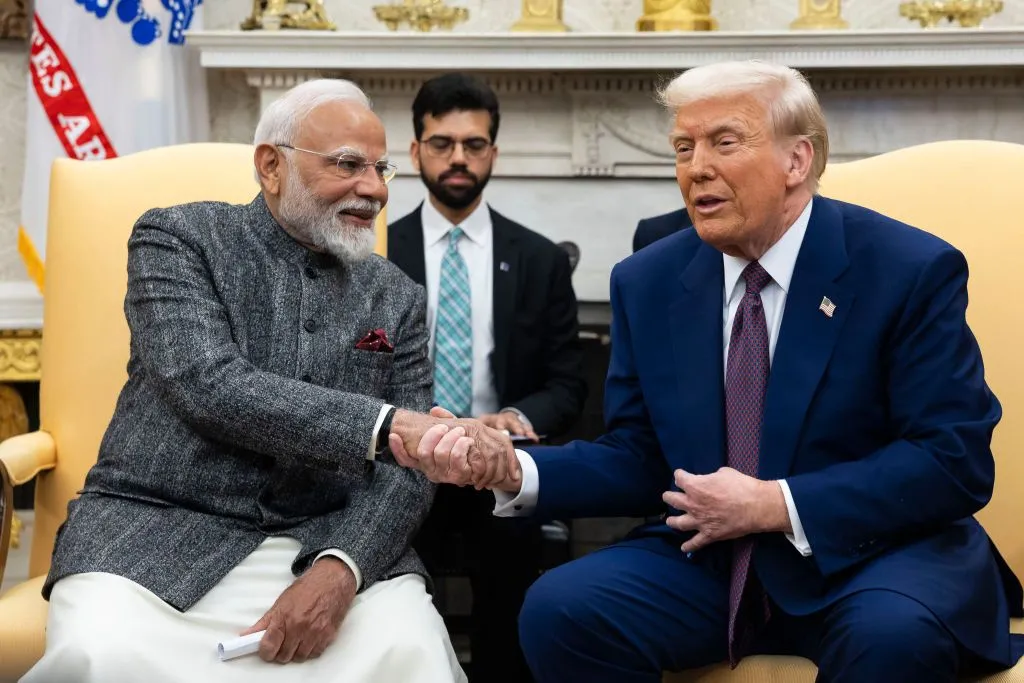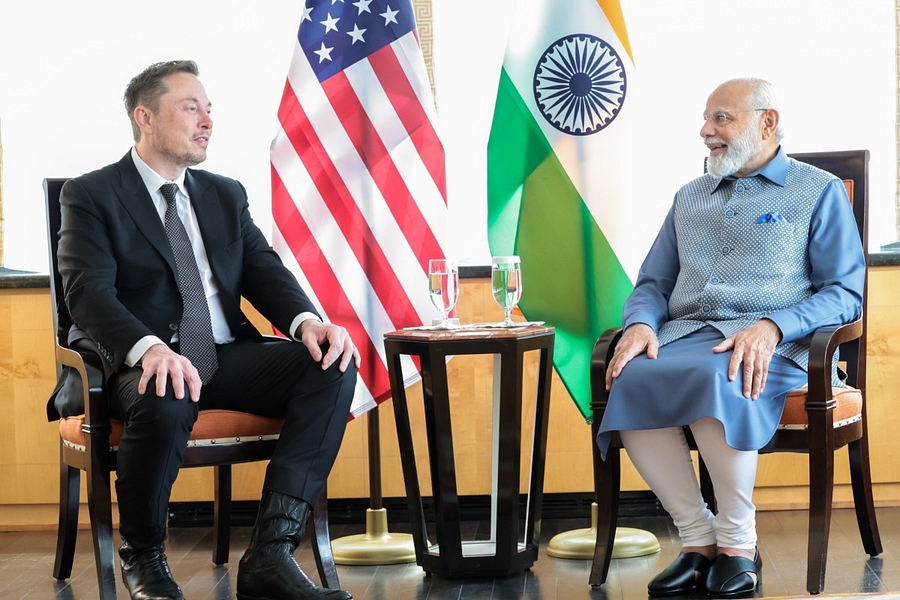Key Highlights from Modi-Trump Talks: Trade, Defence, and Strategic Partnerships 2025

Indian Prime Minister Narendra Modi’s recent visit to Washington during Donald Trump’s second term was a pragmatic, business-focused affair. While lacking the grandeur of a state visit, the meeting yielded significant outcomes, including expanded defence deals, energy exports, and trade negotiations. Here are the five key takeaways from the Modi-Trump talks:
1. India’s Trade Strategy Amid Trump’s Reciprocal Tariff Threat
One of the pressing concerns during Modi’s visit was Trump’s push for reciprocal tariffs, which could impose matching import taxes on countries that levy duties on US exports. India, which enjoys a trade surplus with the US, preemptively reduced its average tariffs from 13% to 11% in its federal budget.
Experts are divided on whether India has successfully dodged tariff shocks. Ajay Srivastava of the Global Trade Research Institute believes India has little to fear, as 75% of US exports to India face import taxes below 5%. However, Abhijit Das, a trade expert, warns that Trump’s approach could extend beyond tariffs, factoring in non-tariff barriers like VAT and procurement restrictions. This could challenge India’s “Make in India” initiative and its ability to prioritise domestic producers.
2. Ambitious Trade Goal: Doubling US-India Trade to $500 Billion by 2030
The two leaders set an ambitious target to more than double bilateral trade from 190billionin2023to500 billion by 2030. To achieve this, Modi and Trump committed to negotiating the first phase of a trade agreement by autumn 2025. The talks will focus on market access, tariff reductions, and supply chain integration across goods and services.
While the specifics of the trade deal remain unclear, experts like Priyanka Kishore suggest that low-hanging opportunities, such as increased oil imports from the US amid sanctions on Russian energy, could help bridge the gap.
3. Defence Ties Deepen with Multi-Billion Dollar Deals
Defence cooperation was a cornerstone of the talks. Trump announced plans to expand US military sales to India by “many billions of dollars,” including the potential supply of F-35 stealth fighter jets. This marks a significant shift in India’s defence procurement, as the US has become its third-largest arms supplier, with trade surging from near zero to $20 billion.
However, experts caution that bureaucratic hurdles and high maintenance costs for advanced systems like the F-35 could complicate matters. Despite these challenges, India’s growing reliance on US defence equipment, coupled with delays in Russian arms deals, signals a deepening partnership.

4. Modi Meets Elon Musk: Tesla’s India Plans Still in Limbo
During his visit, Modi met Tesla CEO Elon Musk to discuss artificial intelligence and emerging technologies. However, Tesla’s plans to enter the Indian market remain uncertain. Musk has been pushing for direct spectrum allocation for Starlink, which clashes with Indian billionaire Mukesh Ambani’s preference for auctions.
India is also courting Tesla to set up a manufacturing plant, offering reduced import taxes for automakers committing $500 million and local production within three years. While Tesla has yet to confirm its plans, the meeting highlights India’s efforts to attract global tech giants.
5. Modi’s Rare Press Conference Appearance
In a rare move, Modi joined Trump at a press conference, answering questions on illegal immigration and the US Department of Justice’s bribery charges against the Adani Group. Modi stated that India is ready to take back verified illegal migrants and clarified that he had not discussed the Adani case with Trump.
This marked only the third time in Modi’s 11-year tenure as Prime Minister that he directly engaged with the press, underscoring the significance of the visit.
Conclusion: A Pragmatic Partnership with Challenges Ahead
The Modi-Trump talks underscored a pragmatic approach to strengthening US-India ties, with a focus on trade, defence, and energy. While the ambitious $500 billion trade target and expanded defence deals signal optimism, challenges like reciprocal tariffs and bureaucratic hurdles remain.
As both nations navigate these complexities, the outcomes of this visit could shape the trajectory of US-India relations in the coming years. For now, the partnership appears to be on a steady path, with both sides committed to deepening collaboration in key areas.
